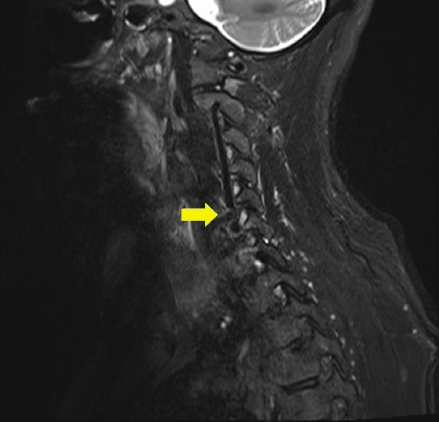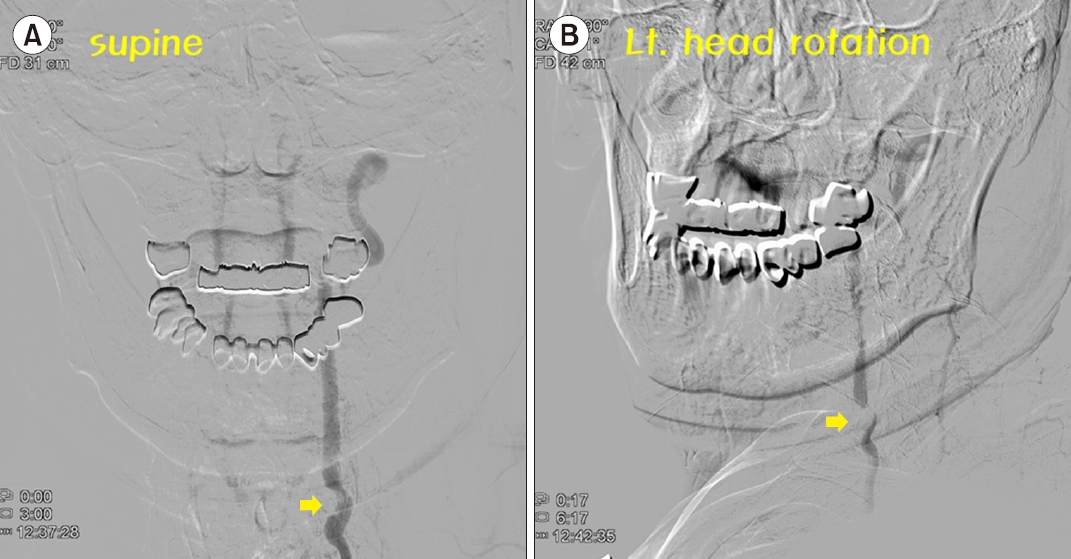Articles
- Page Path
- HOME > Res Vestib Sci > Volume 21(4); 2022 > Article
-
Video
고개 회전 시 특징적인 안진을 보이는 척추동맥압박증후군 1예 -
전은주

- A Case of Vertebral Artery Compression Syndrome Showing Characteristic Nystagmus during Head Rotation
-
Eun-Ju Jeon

-
Research in Vestibular Science 2022;21(4):111-112.
DOI: https://doi.org/10.21790/rvs.2022.21.4.111
Published online: December 15, 2022
Department of Otolaryngology, Incheon St. Mary’s Hospital, College of Medicine, The Catholic University of Korea, Incheon, Korea
- Corresponding Author: Eun-Ju Jeon Department of Otolaryngology, Incheon St. Mary’s Hospital, College of Medicine, The Catholic University of Korea, 56 Dongsu-ro, Bupyeong-gu, Incheon 21431, Korea Tel: +82-32-280-7372, Fax: +82-50-4411-7964, E-mail: ejmercy@catholic.ac.kr
• Received: November 9, 2022 • Revised: November 8, 2022 • Accepted: December 2, 2022
Copyright © 2022 by The Korean Balance Society.
This is an open access article distributed under the terms of the Creative Commons Attribution Non-Commercial License (http://creativecommons.org/licenses/by-nc/4.0) which permits unrestricted non-commercial use, distribution, and reproduction in any medium, provided the original work is properly cited.
- 2,345 Views
- 91 Download
Supplementary materials
Supplementary Video 1.
-
CONFLICT OF INTEREST
No potential conflict of interest relevant to this article was reported.
-
FUNDING/SUPPORT
None.
ARTICLE INFORMATION
Fig. 1.Cervical spine magnetic resonance imaging revealed the protrusion of a bony spur (arrow) that compressed the course of the left vertebral artery.


Fig. 2.Dynamic four-vessel angiography. (A) Compression of the left vertebral artery by the bony spur (arrow) of the cervical vertebra and (B) rapid decrease in the cerebral blood flow when the head was turned to the left (arrow).


- 1. Kim JS, Newman-Toker DE, Kerber KA, Jahn K, Bertholon P, Waterston J, et al. Vascular vertigo and dizziness: diagnostic criteria. J Vestib Res 2022;32:205–22.ArticlePubMedPMC
- 2. Choi KD, Choi JH, Kim JS, Kim HJ, Kim MJ, Lee TH, et al. Rotational vertebral artery occlusion: mechanisms and long-term outcome. Stroke 2013;44:1817–24.ArticlePubMed
REFERENCES
Figure & Data
References
Citations
Citations to this article as recorded by 


 KBS
KBS
 PubReader
PubReader ePub Link
ePub Link Cite
Cite



